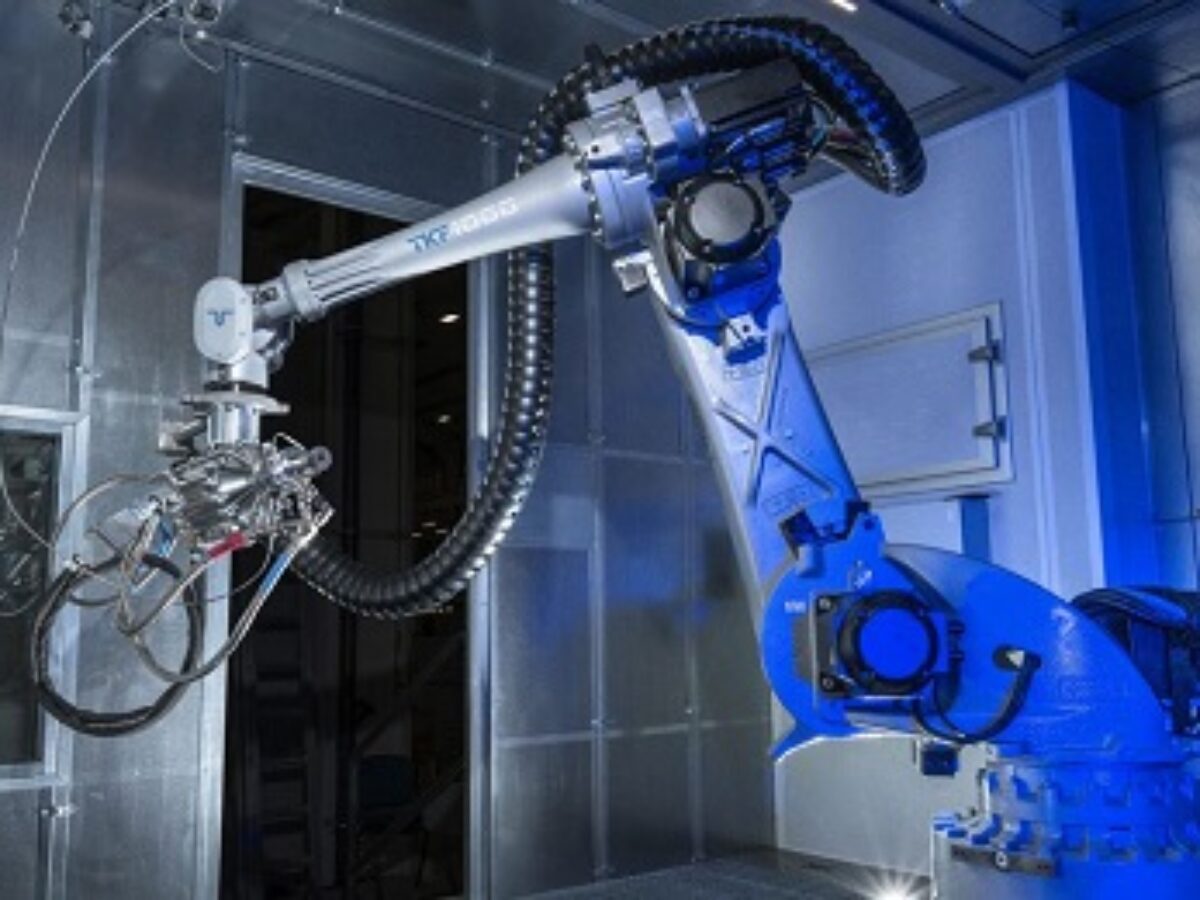Celebrating Australian sovereign capability – our burgeoning additive manufacturing sector

Our series – Celebrating Australian sovereign capability – turns to this contribution from our sponsor, Titomic. Dominic Parsonson looks at the possibility of adding value to raw materials through new manufacturing technology invented in Australia.
Australia is home to a large reserve of titanium mineral sands, which can be found in various locations across the country. Despite this, the country has not fully capitalised on this resource to add value to its manufacturing sector.
Australia needs to invest in developing its capacity to refine and process these titanium mineral sands to produce high-quality titanium products that are in high demand in various industries.
In 2018, Australia exported 1.35 million tonnes of titanium mineral sands, the precursor feedstock to produce titanium, which had a total export value of just $535 million.
By completing further stages along the production process to these mineral sands before export, Australia could have generated billions of dollars in revenue, which is now lost.
This stems from the high price of metal powder feedstocks used in many metal additive manufacturing systems, often priced at $200 per kilogram or more.
There is an enormous untapped potential that can, and must, be realised.
However, historically, titanium manufacturing has been cost-prohibitive due to the high cost of raw materials, as well as the complex and time-consuming forging and casting processes.
And although titanium is a highly desirable material due to its strength, durability, and reduced weight, manufacturers have often been precluded from using this desirable metal.
With step-changes in manufacturing technology being developed in Australia, such as the burgeoning additive manufacturing market, Australia is regaining the ability to add value to our natural resources.
Rather than relying on traditional methods of casting and forging, Australia is home to many innovative and advanced companies, punching well above our weight on the global stage.
One such technology, named Titomic Kinetic Fusion, is produced by Titomic, an Australian-based advanced manufacturer located in Melbourne’s east.
This revolutionary technology uses near-net-shape manufacturing and low-cost, lesser refined materials to produce large-scale titanium parts. By using this process, manufacturers can reduce waste, increase efficiency, and lower costs, making it a highly viable alternative to traditional forging and casting of titanium.
The Kinetic Fusion process involves the use of a supersonic particle deposition technique that creates a strong, fully dense bond between layers of metal particles.
The resulting parts are highly durable and have excellent mechanical properties, making them ideal for use in a wide range of applications.
One of the key benefits of the Kinetic Fusion process is that it can be used with a variety of raw materials, including low-cost titanium. This means that manufacturers can improve the performance of their parts while competing on cost with more traditional methods.
Titomic’s Kinetic Fusion process has numerous practical applications. For example, it can be used to produce large-scale aerospace parts, defence components and solutions for the mining industry.
These parts are highly complex and traditionally require significant time and resources to manufacture.
The Kinetic Fusion process makes it possible to produce these parts quickly and efficiently, reducing costs and increasing production rates. This capability opens up a new world of possibilities for titanium manufacturing – right here in Australia.
Wherever steel is concerned, manufacturers and equipment operators now have a choice between low-cost titanium manufacturing, or traditional steel components.
Titomic has introduced the technology to multiple sectors, including within aerospace and defence with BAE Systems and Boeing. From oil and gas, to mining, marine, and beyond, the versatile technology is providing a range of new technological feasibilities.
So far, the Kinetic Fusion process has been used to create lightweight doors, low-cost radiation shielding, gun barrels, invar tooling faceplates, and automated glass mould coatings, to name a few.
Further, the Kinetic Fusion process has been introduced to large defence primes, such as BAE Systems and Boeing, as they investigate the applications within aerospace and defence.
By investing in advanced manufacturing technologies, Australia can add value to these resources and produce high-quality titanium products that are in high demand in a wide range of industries.
With its practical applications and cost-saving potential, the Kinetic Fusion process is one of the most viable technologies for achieving this goal.
In conclusion, Australia’s large reserve of titanium mineral sands, along with our determined private sector and innovative approach, are valuable resources that hold the potential to drive the country’s manufacturing sector forward – as well as the country’s space and defence sectors.
Picture: Titomic
@AuManufacturing’s editorial series – Celebrating Australian sovereign capability – is brought to you with the support of Nova Systems and Titomic.
Topics Manufacturing News Technology
@aumanufacturing Sections
Analysis and Commentary Awards Defence Manufacturing News Podcast Technology Videos








